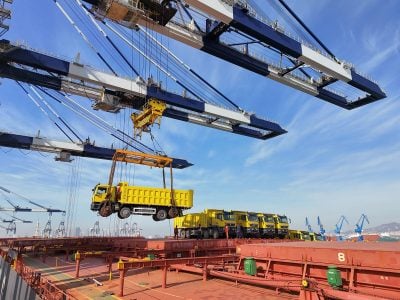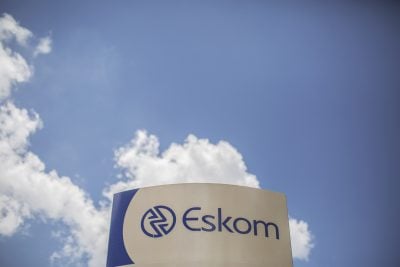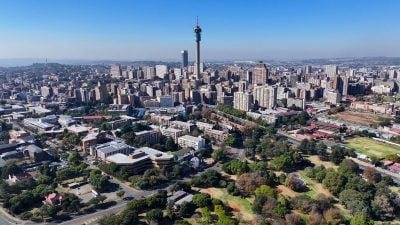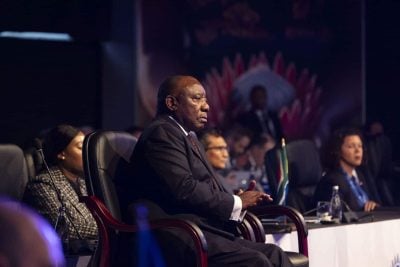Just one of many resources that the DR Congo has in abundance, coltan, has received an unprecedented amount of attention from Western-based NGOs. They accuse the world’s technology corporations of fuelling the bloody conflict in the eastern Congo region where this metal is found. More accurately termed columbite-tantalite, but universally known by its abbreviation ‘coltan’, author Michael Nest explodes many of the myths that have grown around this controversial metal.
Like any good researcher, Nest takes the time to crosscheck and corroborate the basic facts and figures. One of the first ‘facts’ that he debunks is the commonly cited figure of 80% as the DR Congo’s share of the world’s reserves, or even the world’s production of coltan.
The earliest article he could find that gave this figure was a story from Agence France-Presse that quoted the 80% as Africa’s total, which was then repeated in March and April 2001 respectively by the UK’s Guardian newspaper and New Scientist magazine. It was the BBC News website, in the same year, that first attributed the 80% tag to DR Congo itself.
Nest tells us that there is no shortage of coltan, and it is, in fact, found in many countries around the world. The author’s own research suggests an “informed estimate” that Central Africa has about 9% of the world’s total and the DR Congo has about 7-8% of global reserves. Nest also believes that for much of the 2000s, the DR Congo may have produced around 20% of the world’s total, but historically the largest producer has been Australia. However, there is evidence of parallel exports, such as occur from DR Congo through Rwanda and even Zimbabwe – while production also began in Mozambique in 2005 and Ethiopia increased production six-fold over the decade.
Booms and troughs
Demand has steadily grown since the end of WWII, but it continues to be cyclical with peaks, such as the 2000 boom, and troughs, such as occurred in 2001. This is a similar price behaviour to other metals. Coltan is not simply used in mobile phones and other electronic devices, although these probably account for nearly 80% of production, but it has other industrial applications as diverse as the aerospace, automotive, energy generation and medical devices sectors.
This is because the tantalite alloys such as coltan are strong and have a resistance to cracking under high temperatures and can also cope with rapid cooling. Also resistant to corrosion, they are used for orthopaedic implants and heart pacemakers. During the Cold War years, the US Defence Logistics Agency stockpiled this and other strategic metals. Nest tells us that in discussing the coltan business with a former trader in the Congo, he was told that it was only “in about 2000 that we [Congolese] started to hear about coltan – it was not known before that”. This was because it was extracted as a by-product in processing plants and, as Nest explains, “Ordinary Congolese had neither the access nor the specialised education to know that what was ostensibly tin mining also produced significant quantities of an obscure mineral.”
And yet, as Nest later observes, coltan mining offers relatively easy entry and participation by armed gangs as artisanal production can be controlled through violence. “By contrast,” he adds, “capital-intensive industrial production would screech to a halt if mine managers used violence against labour.” But he also questions to what extent coltan can be singled out as a cause of violence and source of profits for armed groups.
His conclusions are somewhat surprising. He avers that fighting in the DR Congo is by no means the result of just one issue, and the coltan industry is no more (nor no less) culpable than any other informal resource extraction in the perpetuation of conflict. Other issues leading to violence might include ethnicity and nationality disputes, and arguments over land rights.
It would appear that conflict in eastern Congo is a many-headed hydra, and coltan represents just one of the root causes of it. In fact, Nest offers a summary of five waves of major periods of fighting over the last 40 years in the eastern Congo – and their underlying causes, which have little to do with coltan although the metal might have been a source of funding, just as gold, tin and other diamonds were. He defines the eastern DR Congo as the provinces of North and South Kivu, and parts of Ituri, Maniema and northern Katanga. It is a region much prone to conflict with tensions arising over which ethnic groups had access to land and the right to own it, as well as citizenship and associated rights. As the author pithily comments: “The policies of the Belgian colonial officials and President Mobutu created and exacerbated tensions. Access to land or citizenship, or both, was manipulated opportunistically by both regimes in order to favour certain communities.”
Nest explains that Mobuto in 1972 gave Congolese of Rwandan descent full citizenship rights, enabling them to buy land and become government officials, then reversed that decision a decade later. This created divisions between the Banyamulenge and Banyarwanda on the one hand, and indigenous (or, more accurately, ‘allochthonous’) Congolese on the other that led to violence in 1993 over ownership of agricultural farmland. A second wave of violence followed the 1994 Rwandan genocide and an influx of refugees from Rwanda that revitalised the earlier violence that Nest describes as “systematic violence between communities along ethic and citizenship lines”.
Mobuto’s fall
The war against Mobutu in 1996 and 1997 gave rise to the third wave of conflict. “After three decades of manipulating ethnic grievances to gain support and undermine adversities,” Nest writes, “Mobutu himself had many domestic opponents. The governments of Rwanda, Uganda and Angola had all suffered from incursions mounted from rebel militias based in the DR Congo – then Zaire – that Mobutu was either unwilling or unable to control. This was the principal reason for their decision to fund and organise a military campaign to depose Mobutu.
Congolese troops from eastern Congo joined the campaign, drawn especially from the Kinyarwanda-speaking communities. Headed by Laurent-Désiré Kabila (the father of the current president, Joseph Kabila), the eight-month campaign was spectacularly successful. Subsequently, the fourth wave of violence took place between 1998 and 2003 and was, the author avers, rooted in the tensions between the newly installed President Kabila and his Rwandan and Ugandan allies. Ten months of fighting in what is now known as the Congo War, resulted in a million deaths. In fact, some believe that to date many more lives may have been lost either directly or indirectly of associated causes such as disease and starvation.
“The motivations of armed groups evolved as the conflict progressed,” Nest informs us. He also provides a table, drawn from UN data, which indicates that the Mai Mai of eastern Congo (a loose-knit coalition of Congolese fighters that oppose Rwandans, Ugandans and Congolese Kinyarwanda-speakers); the Rwandan army; the Ugandan army, and other militia groups, all had a hand in coltan trading (as they did in gold, tin, tungsten and diamonds).
And the reverberations of this period have also created the causes of today’s local violence, the fifth wave of violence. As well as, in Nest’s own words, “top-down manipulation in the form of military campaigns to achieve regional political ambitions,” retaliatory actions and the settling of scores related to events during the Congo War are also underlying reasons that the conflict still continues – characterised by sexual violence, extrajudicial killings and the use of child soldiers. And in early July, the DR Congo’s army suffered humiliating setbacks in the fighting against the M23 rebel movement in volatile, mineral-rich North Kivu province.
The final chapter of this book analyses the future of ‘coltan politics’. The author argues that the populist NGO campaigns in the West (a whole chapter had previously described 10 advocacy campaigns) have had a direct impact on coltan’s value chain.
Nest writes that “Western corporations are pulling out of the market for [the DR Congo’s] coltan, causing a reconfiguration of the industry”. But this news is less dramatic than it might first appear as it has not stopped the trade in the Congo’s coltan, nor the profits that are earned by various armed groups in the DR Congo. The reason is China, which has become the primary destination for the region’s coltan. The outlook is that demand for end products that contain coltan will increasingly shift away from Western markets towards the developing world. But the book’s key message is that the political significance of coltan, even as its value chain evolves, is not in its casual linkage to violence in the Congo but in the Western activists’ effective manipulation of the mobile phone (which contains tiny quantities of the ‘conflict mineral’) as a symbol of how ordinary people and multinational corporations, far from Africa, are implicated in the Congo’s coltan industry and therefore its conflict.
Want to continue reading? Subscribe today.
You've read all your free articles for this month! Subscribe now to enjoy full access to our content.
Digital Monthly
£8.00 / month
Receive full unlimited access to our articles, opinions, podcasts and more.
Digital Yearly
£70.00 / year
Our best value offer - save £26 and gain access to all of our digital content for an entire year!
 Sign in with Google
Sign in with Google 


